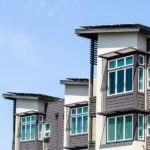Signs of Subterranean Termite Infestation
Termites are a big problem for property owners, causing an estimated $5 billion in damage to homes and businesses each year. California is home to three different species of termites, dampwood, drywood, and subterranean. Subterranean termites are by far the most destructive and can have colonies that number into the millions. Termite damage is not typically covered by insurance, so your best course of action is to prevent it from happening in the first place. But what if you do have a subterranean termite infestation? Do you know how to spot the signs?
- First, know how to identify the termites themselves. Termite colonies have a complex social structure, with a queen at the center of it. The queen and her mate are unlikely to be seen because they’re deep in the colony, producing a steady stream of new termites. There are termites you may see on your property, though, if you have a termite infestation.
- The workers are the largest group. Responsible for building and maintaining tunnels, foraging for food, and feeding soldiers, nymphs, and reproductive termites, they’re the termites that dig into the wood of your home. You’re unlikely to see them, though, unless you tear open a wall; they’re blind and don’t like to be in the light. Worker termites are white and wingless, about 1/8 to 3/8 inch in length.
- The soldiers defend the colony. They’re wingless, blind, and soft-bodied, with yellow-brown heads and black mandibles. Their bodies are about the same size as worker termites’ bodies, but their jaws are quite large and powerful. Their mandibles are more suited for defense than eating, and they have to be fed by workers.
- Nymphs are baby termites. They look like tiny, pale, whitish versions of adult termites. It’s rare to see these small termites because they’re well-protected by the colony, but if you see them, it’s a safe bet that adult termites are nearby. Sometimes, baby termites are mistaken for small white ants.
- Alates, or swarmers, are the only winged termites. They’re dark brown to sold black, with four wings, all the same size, with rounded wingtips. In fact, homeowners often mistake them for flying ants. While they look something like ants, it’s easy to tell them apart; termites have solid bodies, while ants’ bodies are segmented, with a clearly defined neck and waist. Alates swarm away from their colonies to establish new ones. When they find a suitable nesting spot, they drop their wings.
- Wood around your home provides a welcoming environment for termites. Subterranean termites build their colonies underground and tunnel into homes, but they’re also often spotted in other food sources outside of the house. Piles of firewood, scrap lumber, and mulch are likely places to find termites, as are plants and trees. That’s why it’s essential to remove dead trees, keep mulch away from your foundation, and store firewood and lumber at least 20 feet away from your house.
- Mud tubes are a sure sign of a termite infestation. Subterranean live in the soil beneath and around a house, and to protect themselves from the outside environment while making their way into the home, they build mud tunnels or tubes. These tubes can be relatively thin and sometimes mistaken for stains from the rain on the patio or the house’s exterior. Look for them in those places and inside your home, in the garage, basement, kitchen, and any other rooms with a humid, damp environment.
- Discarded termite wings also indicate the presence of a termite colony. Remember, alates shed their wings when they start a new colony because losing the wings allows them to crawl into tighter spaces. You might see these left-behind wings near your windows or outside of your home. If you see transparent wings around your home, contact a termite treatment professional as soon as possible.
- The signs of a termite infestation can sometimes be subtle. You might notice dark spots or bubbling on your hardwood floors. Paint may bubble and peel on your wall, or you may see tiny cracks. This might not alarm you right away, but bubbling paint indicates moisture, which could mean termites. This bubbling and peeling can happen inside, or it can happen on your wood siding outside.
So, what can you do about subterranean termites? Prevention is the best treatment method, and there are a few things you can do to make your home a less hospitable environment for termites. Perhaps the most significant factor in controlling termites is preventing the accumulation of excess water. Termites need moisture to survive, so repairing leaks as soon as they happen, keeping your roof in good repair, and keeping your gutters clean will go a long way in keeping them out of your house. Refrain from storing wood near your home or mulching near your foundation. Perhaps the most important thing you can do to prevent a termite infestation, however, is scheduling regular termite inspections. It’s recommended that homeowners schedule termite inspections once a year. Your termite treatment professional can recommend further preventive measures to take to protect your home from subterranean termites at the inspection.
At MightyMite Termite Services, we perform termite inspections to ensure that your home is free of termites. We also work hard to help you keep your home safe from termites, use naturally derived treatments and have a low impact on the environment. We diagnose and treat infestations with the most effective methods and unmatched warranties, solving your termite problems the first time, with an industry-best “no call-back rate.” Combined with our experience, technology, and highly trained professional staff, that makes us the leading extermination company in the Bay Area. We understand that your home is your most important investment, so we work hard to provide excellent service, utilizing best practices to solve our customers’ termite problems in Northern California. For more information, call us today at 408.335.7053, email Info@mightymitetermite.com, or contact us through our website.







